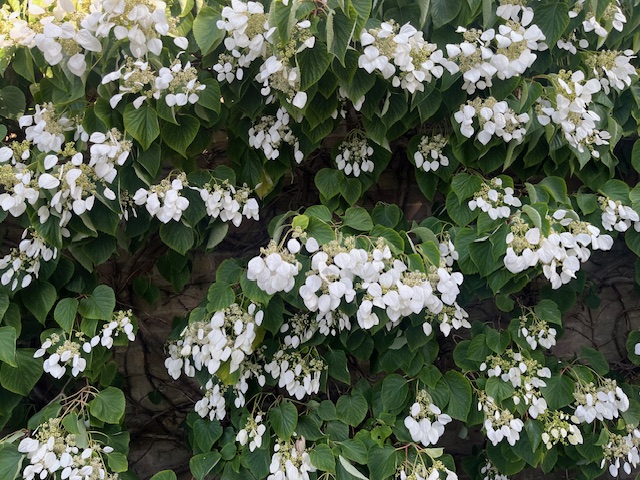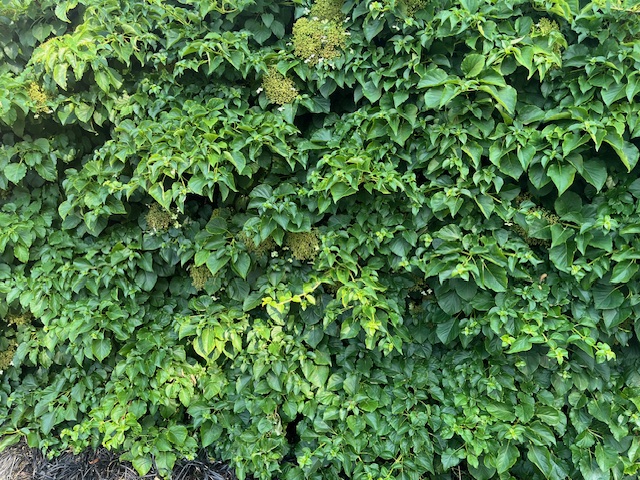Pruning Hydrangea Petiolaris On Garden Wall

Why Choose Hydrangea petiolaris?
Hydrangea petiolaris is a self‑clinging climber that brightens shady walls with frothy white lace‑cap flowers in early summer. Its tolerance of hard pruning makes it easier to keep within bounds than many shrub hydrangeas.
Getting Young Plants Established
- Initial support matters – Although the stems produce tiny suckers and aerial roots that eventually grip brick or stone, they do not anchor firmly straight away. Tie new growth to galvanised wires or a trellis fixed 30–45 cm (12–18 in) apart.
- Gentle ties – Use soft garden twine or rubberised plant ties, leaving a little slack so stems can thicken. Remove or loosen ties once each shoot has attached itself.
Annual Maintenance
| Task | Timing (UK) | Details |
|---|---|---|
| Hard prune | Autumn, after flowering (or up to early spring) | Cut back vigorous leaders by up to one‑third every two years to restrict spread and encourage fresh flowering wood. |
| Light tidy‑up | Late winter | Remove dead, crossing or weak stems. Shorten back any wayward shoots that threaten gutters or windows. |
| Feed & mulch | Early spring | Apply a balanced slow‑release fertiliser and 5 cm (2 in) of well‑rotted compost around the base, keeping it away from the stem. |
Training Tips
- Fan shape: Aim to space main framework stems like a fan across the wall, encouraging lateral shoots to fill gaps.
- Replace ageing wood: After several years, remove one or two of the oldest stems at the base to stimulate vigorous new leaders.
- Avoid over‑thinning: Flower buds form on current‑season growth, so retain plenty of young shoots for the best display.
Common Problems & Solutions
- Poor adhesion: If stems still flop after a season, add extra ties and check that the wall surface is not too smooth; a rougher backing board can help.
- Sparse flowering: Excess shade or over‑feeding with high‑nitrogen fertiliser can reduce blooms. Switch to a balanced feed and prune less severely.
- Winter damage: In cold regions, delay major cuts until February–March to avoid frost die‑back on freshly pruned wood.
Final Checks
- Remove any remaining ties once stems hold fast with their own suckers.
- Keep the wall clear of debris so aerial roots can grip.
- Stand back each summer to assess shape; minor snips with secateurs often prevent the need for drastic cuts later.
With the right early support and a biennial hard prune, Hydrangea petiolaris rewards you with a neat, flower‑laden cloak that clings securely to its wall for decades.





